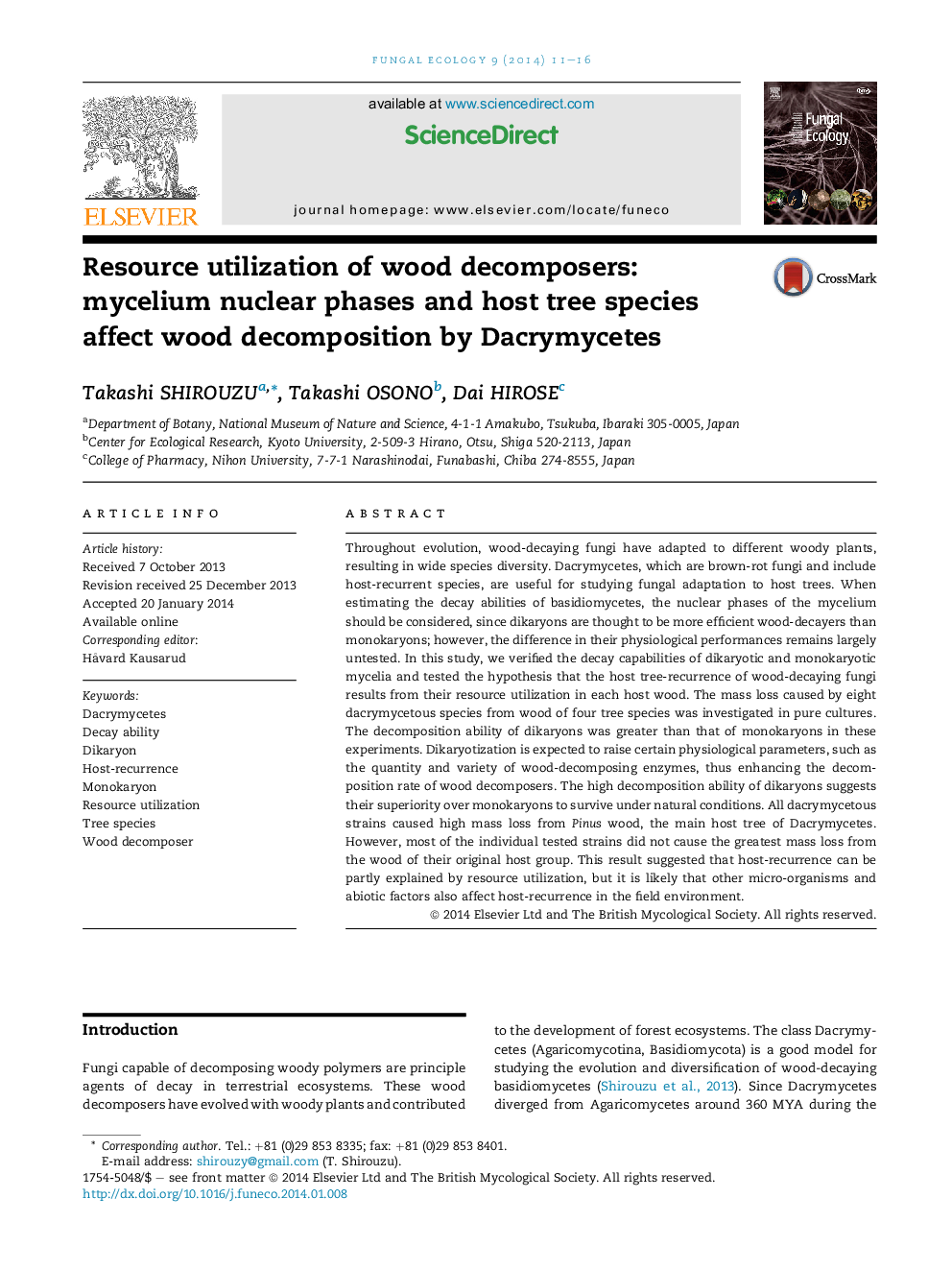| Article ID | Journal | Published Year | Pages | File Type |
|---|---|---|---|---|
| 8384678 | Fungal Ecology | 2014 | 6 Pages |
Abstract
Throughout evolution, wood-decaying fungi have adapted to different woody plants, resulting in wide species diversity. Dacrymycetes, which are brown-rot fungi and include host-recurrent species, are useful for studying fungal adaptation to host trees. When estimating the decay abilities of basidiomycetes, the nuclear phases of the mycelium should be considered, since dikaryons are thought to be more efficient wood-decayers than monokaryons; however, the difference in their physiological performances remains largely untested. In this study, we verified the decay capabilities of dikaryotic and monokaryotic mycelia and tested the hypothesis that the host tree-recurrence of wood-decaying fungi results from their resource utilization in each host wood. The mass loss caused by eight dacrymycetous species from wood of four tree species was investigated in pure cultures. The decomposition ability of dikaryons was greater than that of monokaryons in these experiments. Dikaryotization is expected to raise certain physiological parameters, such as the quantity and variety of wood-decomposing enzymes, thus enhancing the decomposition rate of wood decomposers. The high decomposition ability of dikaryons suggests their superiority over monokaryons to survive under natural conditions. All dacrymycetous strains caused high mass loss from Pinus wood, the main host tree of Dacrymycetes. However, most of the individual tested strains did not cause the greatest mass loss from the wood of their original host group. This result suggested that host-recurrence can be partly explained by resource utilization, but it is likely that other micro-organisms and abiotic factors also affect host-recurrence in the field environment.
Related Topics
Life Sciences
Agricultural and Biological Sciences
Ecology, Evolution, Behavior and Systematics
Authors
Takashi Shirouzu, Takashi Osono, Dai Hirose,
